
We have all probably heard that Catherine de Medici, brought culture upon the French people (whether they liked paying for it or not), and that she, with her husband Henri II of France, their nine children (one of whom was affianced to Mary Stewart-Queen of Scots from before 10 years of age and died, shortly after their marriage), and his mistress (Diane de Poitiers), their three(?) children, were harbingers of the period of enlightenment and of a trendy form of government called (royal) Absolutism -“One King, One Law, One God”, an expression epitomized in the 17th century by Louis XVI, though not even a direct descendant of Catherine’s; his wife, Marie Antoinette, was. All of Catherine’s children married into prominent royal families of their own and in turn (copying their mother) spent a great deal of the public largess staging outrageous splendors including victuals, parties, a personal zoo, triumphs, and fêtes unlike any of us have really seen the magnificence of except through tapestries and artworks. Though Catherine’s heirs (probably hundreds even though many of her own children died or had no issue) promulgated culture, I do not think their diversity, significance, or largess ever exceeded or met their mother’s, at the time (they tried). People really do not understand to what degree or how ostentatiously the French, or royalty in general for that matter, in those days, lived, and that as a result of these opulent expenditures how fortunate we are to have benefited from these grandiose festivals, or from them came what salon arts-among other things, ballet.

Catherine brought, and repeatedly sent for, chefs, tailors, artists, poets, writers, musicians, personal dancing masters, and any number of other coaches, teachers and “servants”-not just from the Italian court where she was a scion as well, but from around the globe; they instructed not only her own children, but the entire court, on various arts, as well. Many great performances were planned by her for the enjoyment of her guests, and later the public. These spectacles, I have read, involved not only the ladies and gentleman of the court dancing in normal surroundings, but imagine great and opulent sets featuring rides and forests, whole elaborate gardens brought in to recreate lavish and fantastical environments to excite the senses, enveloping viewers (and participants) in delights and repasts, and performances the like of which we could not possibly recreate due to their cost alone, and not possible at all to replicate the magnificence of not just the gesture, but the potential of the world as seen by their complexity, technology, and imagination at the time of enlightenment-oh, were we to enjoy life from the vantage point of a 14th century participant! Not only were these designed to be highly interactive, each one was deemed better than the last, and so on, but also unique, and in no way like the last. Original.
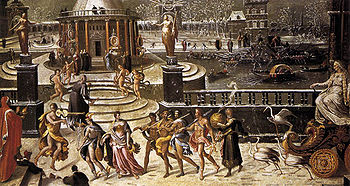
Queen Catherine was a great promoter and through these events managed to keep the court (and the world) poised and waiting for what she would do next. Additionally, she used these soirees to entice illustrious counterparts from other kingdoms to France, to her salons in order to exact her due; this was deliberately done to iterate her family’s political force, and to strategically keep her friends close and her enemies closer, for there were many who aspired to the seat of France. By this, and other methods, she married her sons and daughters to royalty, calling in the obligations for favors as she needed them. You were “in” if she liked you and “out” when she no longer had any use for you. Mary, Queen of Scots, despite having been a part of that royal family for over 10 years, considering herself a Frenchwoman, hastened out of France by a circuitous back route after the death of her young husband, Francis II, King of France, and Catherine’s oldest son. Despite their oft demonstrated closeness (Mary was reared by Catherine as one of her own), Mary somewhat feared her mother-in-law just the same and knew when it was time to tuck tail and leave.
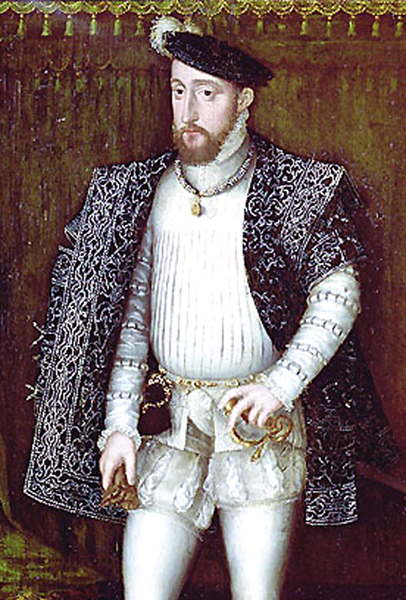
Mary, next in line to the English throne, after Henry the VIII’s children, was originally affianced to Henry VIII’s only son, Edward VI (Jane Seymour). But, as political intrigue of the day would have it, and the time-honored feud between the Scots and the English (for their autonomy), the Scots broke the match and scuttled Mary off to France, preferring to maintain the alliance via the Valois house, as her mother was a member of the Guise family (a compatriot of Henri II, King of France). A political move to put a French Queen and King into the Scottish realm, also Catholic (Catherine would probably not have allowed her son to ever go unprotected to England anyway), but tricky. Catherine’s rise was accidental, more or less, and this was early on, but she was busy finding royalty for her offspring to marry, and betrothals were a guarantee (of sorts), but she might not have been as clever then as she was later. At any rate, it was Mary’s life at stake there and while in France, Mary was still a Guise. Catherine, like many royals, here and there, had come to France to marry the 2nd son, not the heir apparent (who died, as they did then, suddenly), but she seemingly took up where her predecessor had left off, swimmingly in most regards. Henri II was not known to share affairs of state with Catherine in any way at all; but he did support her in her wifely duties which she appeared to take very seriously. It must have been a different life than Catherine hoped for, married to a sullen and gloomy Prince taken by bouts of depression and who, having been held hostage for four years in Spain, purportedly, was difficult to please and unpredictable-he also had a very famous mistress, Diane de Poitier. Catherine worked hard to make a success of her life and legacy, and also surprisingly, to make her King happy, and it appeared that entertainments were the chief employ she used (also food). Henri II, King of France, like later Kings of the Bourbon line, enjoyed dancing and the company of certain people.

His affair with Diane de Poitiers began then, and lasted his lifetime (not that long). It is said she had greater influence, not only on policy, but on development and the budget, than Catherine did, so it was not until his death that Catherine really gained more control over matters of state, and then, mainly through her children or rather, because of them. Perhaps France was better for Mary to grow up in, as she gained more popularity as an “escaped” ruler living in decadent France-the glorious France Catherine was promoting, than she would have, without any romantic excursions, living in rustic Scotland. Francis I, King of France, died shortly after their marriage, at age 15, of tuberculosis (some said ear infection) in 1560. France afforded Mary a life of excitement and wonder, and, if nothing else, the privilege and dynasty of the French court, and untold luxury and surroundings-truly a fairy tale lifestyle. The entire “situation” infuriated Henry VIII, King of England, and his wrath was witnessed in a series of attacks on Scotland, known as the ‘Rough Wooing.” Mary and her new fiance, the Dauphin (Henri II’s heir), Francis (1544-1560), were wed on 24 April, 1558, and Mary, briefly, became Queen of France (1559-1560) as a result. Mary’s was not a happy life, or a long one, but it was a more typical life of that period than we would be prepared to believe. Catherine’s own story is not dissimilar, and Mary was possibly comforted by the thought that her fate might end as well as Catherine’s, and followed the advice of her betters; this was not to be. But, had Catherine married Henri VIII’s son, it is very possible that Elizabeth I, still would have had her head. So, Mary, Queen of France, became Bloody Mary, though it is said. much loved by her people.

In the same year as Francis’ death (1560), Mary’s mother, Mary of Guise (a Bourbon, married to Henry V, King of Scotland), died also; Henry V was her second marriage). Her daughter, Mary, longed to return to Scotland (supposedly), particularly after her mother’s death (and wise, too), since the French were anxious to rightfully establish “their Queen” as the monarch of Scotland-apparently to serve dual political purposes, she was given the boot, permission to leave. The French had the young Queen (Mary) sign documents, prior to this “release,” which they sent to (Henry VIII) England ahead of her, naming her as the rightful heir to the Scottish throne. This arrogant claim by a Queen, upset the English, and undoubtedly set off the chain of events which led to her own execution there in 1567, a mere 7 years after the loss of both her husband and her mother, but this was not the grand design planned for her, and it might be said that what she had learned in her life, prepared her for that eventuality in some respects. Mary was a political pawn, and may have done well to stay in France, or was this was a power move keeping with Mary’s own desires, after all? It is never mentioned that Mary had a desire to rule, but we can assume she was prepared to do, and had done, what was expected of her, despite any other longings. If death was a possibility, then she had clearly already chosen this path to avoid that end already in France -maybe seen as the lesser of two evils by her, and also one of at least, hope.
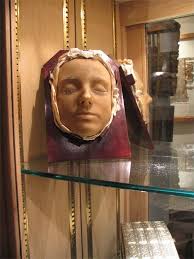
While this may seem a long way away from ballet, it is not, and had Mary stayed in France, had Catherine de Medici not been vigilant in her ambitions to remove threats to the throne, promote her court, or had her own hold not been so tenuous ballet might not have played the part it did, repeatedly, to evoke the results Catherine desired. Afterall, endorphins make people happy, and somehow, Catherine managed to make “non-sporting” courtiers and the public happy with this fete. It is important to also compare and contrast the power of women, felt by some to be less than natural and overflowing, so here was a women par example who exercised that power cleverly, if not ruthlessly-and as a man, she would not have taken any criticism for it. This might be the first example also of using ballet for power as a tool. Seen as a transparency today, the political goings on of ballet companies, choreographers, schools and governments, or with other women (or persons) with whom we compete daily, and for what reasons and ultimately to what end-it almost seems par for the course, child’s play, compared to the lives drawn from it, movements created by it, and occurred throughout the history of ballet, in the halls of the great Kings, not merely in the studio today. I think this is what Shakespeare (1554-1616) meant in As You Like It, Act II, Scene VII, to preserve art faithfully, when he spoke
"All the world’s a stage, And all the men and women merely players; They have their exits and their entrances, And one man in his time plays many parts, His acts being seven ages."
Far less is at stake today, and despite issues of governance, Catherine dutifully upheld her position as Queen, in providing diversions and costly entertainments to persuade her adversaries; it is said that words are far more important than weapons, and in this case, it might have been her choice of entertainments which actually carried her family as far as they went. Ballet has played an integral part in the political and financial processes of many countries, and this was just the first. So, it is also important to note that history contests the Queen’s concern for Mary, and poses some life or death reasons for her rapid departure from France, not only for Catherine’s political interests in England and France, but resolved what best to do with her, as she was Queen, and seen as a threat to Catherine’s offspring, and a possible pawn by outside parties. It is hard to imagine that Catherine had no idea how far alee that wind actually blew. She was still of very marriageable age (purportedly very beautiful), fiery (no doubt due to her Scottish background), and also considered reckless and passionate, and not very cautious–which some attribute to her liberal French upbringing), and might have been the natural choice for another claimant to the throne of France. Perhaps it was not said by Catherine, and instead these words sonorant in history instead:
“Many of us saw in the place where we are now assembled to deplore her, the Queen on the day of her bridals, so covered with jewels that the sun himself shone not more brightly, so beautiful, so charming in all as never woman was. The walls were then hung with cloth of gold and precious tapestry, every space was filled with thrones and seats, crowded with princes and princesses who came from all parts to share in the rejoicing. The palace was overflowing with magnificence, fêtes and masques, the streets with tourney.
“A little time, and it has all vanished like a cloud. The marble, the bronze and the iron are decomposed in the air or corroded by dust, but the remembrance of her brightness shall live eternally.”
~The Archbishop of Bourges
Or, in the words of Elizabeth I,
“The Daughter of Debate,
that eke discord doth sow.”
(~Ascribed to Queen Elizabeth)
So much is perhaps written about her, compared to Catherine, that it is possible to feel more intimately the realities of the time, dark contrasts, possibly fates, and opinions of others through her, when we might look at what was PR by Catherine, and believe that this was indeed a fairy tale existence. This is, in reverse, the path which Catherine herself so arduously avoided. Mary might also have not favored the political process of Catherine, including, ballet. It is however, also interesting to note that has Mary brought these spectacles to Scotland, England’s own influence on the craft might have commenced much, much earlier than it did.

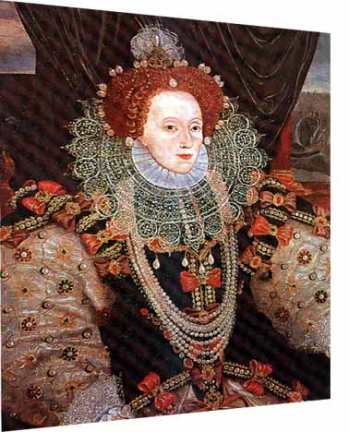
Catherine’s husband, the King, Henri II, who jousted and performed many feats for her, including dancing, had died less than two years prior to these events, by an errant splinter to the eye (during a joust), yielding to an infectious fever. This diversion of the new Queen to Scotland, also left France to Catherine’s will (and Recency) until Charles IX (about her 5th child) was old enough to become King himself. Catherine never ruled herself, but was probably one of the most powerful influences behind any throne in the 16th century (or any other-truth be known). Reigning as Regent (governor) over 30 years, and including, during her youngest son’s (Henri III) reign (last male of the Valois line), where she was said to be his most potent advisor until very shortly before his own murder in 1589. Without Catherine, who only reigned as “consort” alongside her own husband (Henri II, King of France) from 1547 until 1559, it is very doubtful whether her sons would have remained in power at all; they were all seen as weak. In her own way, Catherine had many disappointments in life, but as an orphan, a follower of Machiavelli, it was not what Catherine understood about ruling which limited her power, but what she failed to grasp or have patience to understand which did, at the end, seem to be her and her family’s undoing. She seemed to be vulnerable only due to her great love for her children, unable to counter their whims, transfer her greatness to them, rule for them, so she did the next best thing by actively protecting them, guarding their interests, and influencing their decisions.

By this measure, Catherine was a good mother, and a careful ruler, if unable to see/correct her own children’s flaws, she did her best in spite of them. Her ruthlessness is popularly underestimated. Poor Mary, therefore, was doomed from the start due to events completely out her control, a cog in the wheel of a vastly complex coup d’é·tat, and a real tragedy in a game of thrones. Perhaps, had she lived, Scotland might have been a seeding ground of culture, ballet, and arts, as she had not the chance to rule, but she and Catherine, and many great “outsiders” and “black sheep” have come into their own by sheer determination and persistence, have survived due to not luck, but by circumstances, grit, and indomitable strength of will-perhaps mere stubbornness, none of which could be known in advance, predicted, or changed, except by death, and only history shows us possibly where they might have erred. The fact that it was the imagination, intrigue, and manipulation of women, who created something as interesting as ballet, as beautiful, and as full of the possibilities of art as it could be, does not surprise me. Catherine had to think, she had to be smart, and because of the plight, deaths, and resourcefulness of women, and mothers, in many senses, there is ballet. One can readily see why Catherine had concern for Mary’s charms, which besides unparalleled beauty (at the time), including known kindness.

Little remains of real information for this period of French rule, and despite Catherine’s patronage of the arts, very few paintings exist of the events and festivities which characterized her court. One painter, Antoine Caron, did win her favor, but perhaps his paintings are not as realistic as many people would like. Either that, or the probable fact that his subjects are fantastical and allegorical, elevating the surroundings to heights partially within Catherine’s imagination [sic, this is what it was supposed to look like] and therefore found her support. Catherine was not ugly by any means, but she may have suffered from rickets, however slightly, and other deformities, such as slight sexual ones, but this was commonplace among royalty (See, Hapsburgs), etc. he did have somewhat protruding eyes and a larger mouth, which were not considered beautiful traits of the day, but was, accredited with beautiful hands, a fine figure, and lovely skin-it is no wonder that these features are exemplified in approved paintings of her, and her faults are minimized, without appearing patronizing.
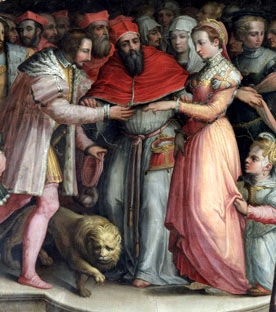
At Henry III’s death in 1589, her realm collapsed, religious wars were ongoing, both within and without France, and with no male heirs left, Catherine probably looked for her daughter Margaret’s match to Henri, King of Navarre (of mixed Catholic and Protestant background), to extend the rule, preserving the control of at least her immediate heirs-he had, after all, promised to convert to Catholicism, and did during her lifetime, anyway, thus gaining her favor by his loyalty. It was not until later that his army defeated her son’s in favor of more tolerance to the Huguenots, his reasoning being that the country was divided. He won overwhelmingly, but continued on, with Henry, in this way, and this was when, no doubt, Henry III contradicted the will of his mother, to come out in more liberal position toward the Huguenots, and at which time he was killed, whether to insure Henri of Navarre’s ascension to the throne, or due to its inevitability due to birthright, and the fact that Henry III had no heirs.

Henry, became Henry IV, King of France, in 1859. It is notable that at the festivities of Henri and Margaret’s arranged marriage, nearly 20 years earlier, on August 24, 1572, Catholics and Huguenots were brought together. The killings and slaughter of Huguenots, some said at Catherine’s own order, are ever after referred to as the St. Bartholomew’s Day Massacre. Henri escaped with his life, with the help of his new wife, promising to convert. Later they would divorce, and Henry would issue the Decree of Nantes, becoming briefly one of France’s more humane and democratic rulers, offering “tolerance” to Huguenots, as well as tax concessions, which made him popular during his reign, and before the reversion of the line to the House of Bourbon, where continued rules, absolutism, and Catholicism by the devout Catholics and the line of Louis XIII would again find a foothold. Catherine had no way to foresee all of this, and at her death probably rested permanently with the thought that the arranged marriage for her daughter with this direct descendant to the throne of France was insured, but unstable, as Margaret and Henri had no issue by that time, so it is probable that when she died, she died knowing of the likelihood of the reversion, and more than anything, perhaps, all of her life, Catherine had feared failure of that- loss of the throne by the House of Valois to the House of Bourbon-probably praying for some interception of fate, desperately. But no one could ever say that Catherine de Medici had not done her very best by her family, or that she had not been strong, or true to her purpose.
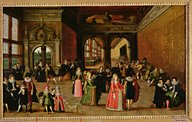
Though historians often credit Catherine with various decisive and history-changing, terrible actions, actions such as the massacre of the Huguenots, it is pretty clear that the length of time she was able to keep the Valois line on the throne, had much to do with memory and perpetuity, if not the final and permanent adoption by France of the Catholic faith, and she did not know another way of dealing with this problem. Without all of these publicity and political attempts to entertain the population, establishing what she was to be remembered for, it makes clear this great woman did that, and did not put more strain on the purse that her successors did, and that she and her children were at least able to govern ostensibly, if not equitably. Often called “the rival queens”, Catherine had her own trouble with her daughter, Marguerite de Valois, who married the future Henry IV, and changed the path of france, was in many a historian’s view, the ultimate betrayal, of a daughter to her mother. Clashes of religion, not culture, were Catherine’s undoing, and so much was made of the Valois’ contributions to France (collectively), that it is no wonder Louis XIV took nearly a century to catch up to her or best her.
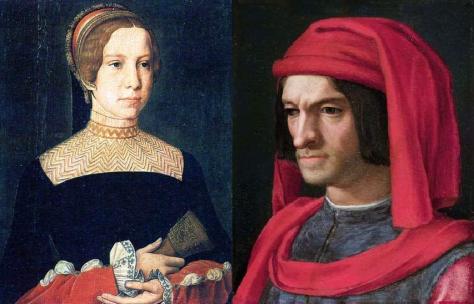
However, without this turmoil, this strife, and these innovations, ballet might never have been the success that it was, so the concentrated efforts of Catherine de Medici to ignite her House of Valois, make it memorable, cannot be too much inflated. At last, it was Henri IV (Henri of Navarre), who had married her daughter, Margaret, who was radical to that end, selfish in other ways, and who was the cause of the destabilization of the House of Valois, and not Catherine, probably due to his more liberal religious views (and his ambitious wife). The zig-zag course of Catherine’s life, the loss of her parents as a newborn, her commoner status, her luck, the decisions she made, that she was able to bear so many offspring following medical corrections, the loss and death of her children, betrayal, overcoming of certain odds, such as her husband’s lifelong affair with Diane De Poitiers, the selected marriages for her children, her promotion and ingenuity, all bear testimony to the fact that she was perhaps the last and most ambitious of France’s great rulers, and a determined warrior queen, and whom, in the future, France has had no equal. Aside from Cleopatra, whom even less is known about, Catherine de Medici, remains an object of controversy in many more arenas than any other Queen, and the most fascinating subject of films, books, and diatribes-however scant the text and proofs-the imagination runs wild, and her interests spanned everything.

Dancing was one of Catherine’s many passions and she knew it pleased others greatly. Many dancing fetes were held at her many palaces and there was always music, theater and poetry. All of the arts were represented in her court, but not all at the same time, or at once. There were those who wrote and directed ballets with their household members and as early as 1530, and there is a reference of the Count of Savoy preparing and acting in ballets with the princes and princesses of his court, but the most remembered and copied ballets d’action were those of Catherine de Medici who brought an Italian dance master by the name of Baltazarini to teach her children. Everyone knows (probably) that Queen Catherine brought many fashion experiments to the French court as well, making popular the high heel. This shoe was designed, especially for her, to give her the look of a more pointed (and therefore) more attractive line. A bit chubby and ungainly, she felt that this extended, made more graceful her legs and feet, and looked prettier while dancing. Soon the whole court was wearing them! The gesture of presenting the foot was made more popular and of course the ankle was turned out, facing the partner, and presentation for her was everything!
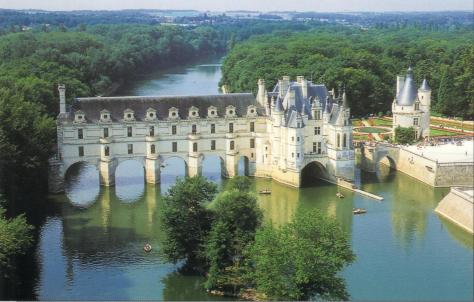
So not only did she feature the first choreographed dances, usually the polonaise (but enough information is not available to discern the truth completely), with costumes, sets, music and scenery, but she also fed the idea that “turnout”, grace and a focus on footwork was necessary for a most appealing presentation of the spectacle of dance. These rules and refinements were the minimum set forth in her court and passed along to other courts as “the thing to do,” and how to do them properly. Through word of mouth, art work and in-person eye-witness accounts these facts remain.There is a lot of speculation regarding Catherine’s planning and motives for the Ballet Comique de la Reine, as nothing she ever did was not for a political purpose (or several), but this, which was to become precedent for ballet, started the form of the cour, and was possibly motivated by personal reasons as well. In her own way, perhaps Catherine threw herself into the creation of spectacle and entertainment to cast a different light on the Royal family, enduring his affair, and most of all to insure the popularity of her court and therefore her children. It is said Henry III, her fourth son, maybe/maybe not gay, was encouraged to (actually) celebrate his favorite’s marriage, Duke de Joyeuse, to Margaret of Lorraine. In order to give this sacrament its most noble and elevated appearance, it is said Catherine planned a most elaborate performance for her son’s benefit, and for her court and admirers, entitled The “Ballet Comique de la Reine.” It is is said to have been the most costly performance of hers to date, coming in at over one-million ecu. Although these tidbits are widely argued and disagreed with by historians, it does seem important to mention them, as in a lot of gossip, sometimes there is truth.

This extravagant entertainment (Ballet Comique de la Reine) cost more than a million ecue (a la couronne). Money was rather unstable in this period of history, and monarchs tended to play around with the value of coinage, but merchants did not, so it is fairly certain the cost of the affair was remembered accurately. Although the ecu did not rise in value comparatively and stabilize until 100 years later, the French sovereign’s coin was undoubtedly solid gold, and having the same approximate value as an English or Spanish sovereigns coin would have had (for they desired to best each other), thus the expression, “worth your weight in gold.” Henry of England’s gold coin, in British culture, was worth more to its people (and to Henry), but in France, the Queen paid in her gold, probably never in silver, so a commission from the Queen would have been in gold, at the going rate universally, but worth much more (in gold) as coming from the Queen, whose “weight” was greater than anyone else’s. So when these costs are bandied about, and uncertain, the only absolute certainty was that there was status in being paid by the Queen, this payment was the best and highest monetary payment one could receive, even if its value on the common market was roughly equal (gold did not go up more than 10x silver which is still a little low), until later in the next century, and the affair was by principal the most costly. In grams, the ecu was 3.399 weight of gold, and imagine one-million of them for this triumphant spectacle!

One-million! From gram to Troy pounds this is approximately 2,700 pounds of gold-a ton is 2000 pounds-more than 1 ton of gold. Possibly the weight of her entire immediate family. A lot of gold. It’s fineness was 96.35, and the composite of fine gold to trash gold was 3.275:3.399-a very high ratio of fine gold (the Queen’s). In comparison, however, Henry’s English coins were much heavier-and contained more actual pure gold, and were therefore worth more, side by side, had gold been valued or measured intelligently at a common market rate, but it wasn’t, and the gold sovereign sets the standard for gold weighing in at 15.552 grams in 1489. With 15.471 grams of that being fine gold. But Henry would never have spent his gold on this folly. He liked dancing, but he was more occupied with the costs of war, so reserved his fortunes for security purposes. France knew the what money could buy and they bought what they could if only for promotional purposes. For us, this was the moment ballet was sold to the highest bidder, established as an important art and entertainment form, used for a political purpose, and thank goodness, Catherine wanted to buy it instead of opera or acting!
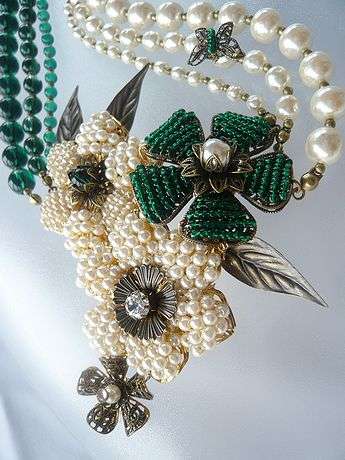
The Queen’s gold had high value in France, but not so much in England, where there was growing hostility for the Catholic French, but perchance in Italy, her gold had more value even because although of French, and even English descent, Catherine had originally come from the Italian court. This may have been the reason she sent so frequently for things from Italy, and her gold might have had even more value there; she was able to spend less of it, bring what was exotic, cultural, and pleasing to her-it underlines that Catherine knew about Italian culture, understood what was missing from the French culture, and with this knowledge, she planned to make her empire great and unique. She did, and whether the Italians worked on credit, sale prices, or obligation, they came and brought their skills where they were paid for and could be perpetuated and appreciated, for if the Queen would introduce them-how could they fail? Had Henry the Eighth felt that ballet and dancing won compatriots, defined civility, or counted for more than war efforts, in other words, competed, ballet might never have become what it was and has been, for through the influence of Henry we would have seen a much different form of danse. But England was always frugal. France extravagant, and Catherine could see that things other than war could make a civilisation memorable-she ruled from her seat, not from her horse.
Balthasar (also known as Baltazarini) de Beaujoyeux’s most important work, was the “Ballet Comique de la Reine” in 1581, considered the first ballet de cour. Of course sets, costume and dialogue were all coordinated as before, but what set this apart as different was that the ballet told the whole story-it was the central theme-the dancing. Catherine recognized this difference, and had a libretto scripted from it due to its success-sort of a princely gamble, setting it down in history as a fete remarkable. As such, the libretto still exists. The event was memorialized with drawings, which were sent in remembrance to all the courts of Europe, sort of like a photo or belated party favor. In this way, they have been passed down in memoriam. She publicized it. As a result, it was copied. Instead of Italian ballet masters, the courts now looked to the French for their dancing examples. In one fell swoop, she did what Nureyev did for ballet, in the 1960’s, she popularized it, stole it, vanquished her artistic foes, and took ballet, the art form, away from the rest of the world and made it French! Italy was so far behind, they focused on opera, and England’s art became the theater. Such a coup has not been seen before or since, and Nureyev merely stole a stage for a generation, Queen Catherine stole the stage for 200 hundred or more years. She made ballet public.
On October 15, 1581, Queen Catherine’s household would showcase this first staged public ballet. Due to Catherine’s influence, and after the succession of her son Henri III, his wife, the reigning queen, Louise de Lorraine-Vaudémont, would formally host the event. The Ballet Comique de la Reine was a four-hour spectacle commissioned by her for the wedding of her sister Marguerite, to Anne de Batarnay de Joyeuse, who was not only a a royal favorite, but also an active participant in the French Wars of Religion. It was probably not by accident that each of Catherine’s grandly staged events was also a testimony to the power and authority of her House, but also were Catholic events, staged by the Catholics, much like the events in Rome, and miracles, to magnify the power of the Catholic Church and its chosen royal family. No doubt Catherine had seen this done, and the success of it. Though this was a new way of promoting her line and her heritage in France, it cannot be ignored that these carnivals and fêtes were often the site and cause of tension and uprising, even violent, with the Huguenots, such as the one in 1572, referenced above.
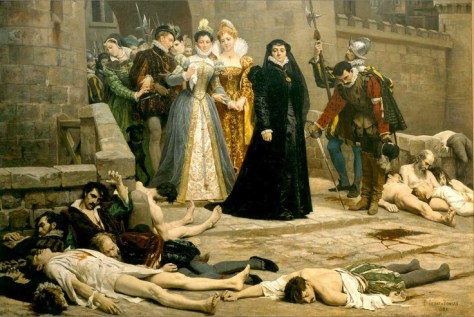
A Gate of the Louvre, after St. Bartholomew’s Day
A complete and utter favorite of Henry, The Duc de Joyeuse, as he was thereafter called, was not to have this soiree, as his only elevation. King Henry III used the marriage as a pretext for raising his rank to the dignity of ‘Duc de Joyeuse’. He was given number one standing over all other dukes of France, with the exception of ‘Princes of the Blood’. His dowry, in consequence, was over 300 000 écus, and he was given the sovereignty of Limours. This is called ‘keeping it in the family and the gift of significant lands and title were to bestow upon him, by royal privilege, parlements above and beyond any other noble.’
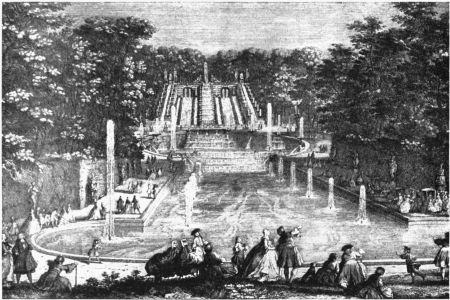
In this, we can see the French crown’s ambition and path toward absolutism really beginning, which would see its end in the revolution over 200 years later. So, with ballet, and unprecedented honors, festivities, and celebrations, came politics-always. Today’ antics can hardly be called unique or unusual, but pale famously in comparison, so matter how dastardly they might seem. Beaujoyeux , or Baltarizini, originally a violinist and tutor, headed the direction, staging and designing this Ballet, with a group of writers, musicians, actors, dancers, architects, and designers of many talents and copious skills. Beaujoyeux also was the court dance master and choreographer as well as valet de chambre to herself and the King. This marriage called for a larger-than-usual celebration and consisted of no less than seventeen events including horse ballets, allegorical feats, a triumph, a water fete, fireworks, and masquerades. One of these was also “Le Balet Comique de la Royne,” described in great detail in various accounts of the period, in artwork and poems. So memorable a festival it was, and lasted for nearly two weeks. The performance took place in the Salle de Bourbon, near the Louvre Museum (which is described as a large rectangular space) which was festooned with flowers and other decorations placed at strategic points around the perimeter of the room. Later, a sort of park, memorialized in some paintings, with a carriage circle, it was a common venue for such entertainments by the royalty at the time. There were few spaces, even in France large enough for such spectacles and frequently they were carried on out-of-doors, so we can assume this venue was of such a size and demeanor that it qualified for such an event.
The story itself concerns the sorceress, Circe, who captures men, turns them into beasts and keeps them in her garden. The performance is stated to have lasted over four hours, and the ballet opened with loud music. One victim escapes the enchanted garden and asks the King for help. A huge fountain is drawn into the hall containing the Queen and her ladies in waiting. The Queens praises are sung and here begins a large battle of good and evil. The Queen and her ladies dance as naiads until the sorceress casts a evil spell over them. Mercury descends from the clouds and dissolves the spell. They begin dancing again and the sorceress casts another spell upon them, forcing them to stop again. Wood deities enter and begin dancing and Pan is summoned to help the naiads but he refuses. The four virtues enter and sing about the King and they call Minerva. She enters and sings with them and herself summons Jupiter. He descends among thunder and music from forty musicians in a golden grove. A brief battle ensues between the sorceress and Jupiter, which she of course, loses. A long and complex variation follows consisting of dancing geometric figures. When the ballet is over, gifts were given to prominent audience members; it is said a dolphin, from his mother, to King Henry III, to signify that a son (Dauphin) be born to continue their rule (which did not happen), though it appears that Henry was in love with his wife, made many efforts, and had been in love deeply before with another woman, Marie de Clèves, whom had died prior to his becoming King (or he would have married her).
The music , singing and dancing continue throughout the performance. Music is the main theme-a lute, a small ensemble, and pieces for up to a whole orchestra, but it is varied and constant. Written accounts stated that the music was “unlike anything ever heard!” Apparently, there were so many diversified performances in costly programs, that no prevailing kind of dancing arose from any of them, as they seemed mostly to be unique and highly experimental. The Balet Comique, a rarefied example, was seen to be the beginning of the ballet de cour-in essence, a clear and dramatic story-line with a structured development and a cohesive theme replete with many art forms. What we do know is that each of these spectacles ends with a grand ballet which is long and complex. Those ballets, up to 1610, were not very well documented and none seemed to be as detailed or elaborate as Circe, although there are histories of many copies. The general public, as well, seems to have been influenced and impressed by them. Their history stemmed from the Italian Commedia dell’arte which was a traveling comedy show in which their characters wore masks. There were a lot of ballet de cours subsequently, but the genre seems to have disappeared by about 1673.
Beaujoyeux’s choice of music was that type composed by Lull, Bach and even Mozart,
and had a very distinct rhythm much like a sixteenth-note polska. Despite the fact that these singing, dancing, poetry-laden independent productions, ending in a ballet, were started in France, they were not formed into a permanent unison by the French. Until much later there was not apparent what we now recognize and exhibit as the art form, but it is Catherine de Medici, and her family and descendants who are the forbears of such noteworthy entertainment and who we can thank for the history of these continued divertissements. What is particularly significant about the ballet de cour itself is the strong position of dancing as well as the theatricality of the dancing productions. Plates exist to detail some of the creative hyperbole, which the French were known for, and the allegorical references in the productions did become the theme for classical ballets, such as those by Fokine, again popularizing their form in what was not strictly original but a neoclassical revival of that bygone era. In other words they became the subject of history of ballet and therefore fodder for later choreographers to develop onto.
Research is partially credited to articles which appeared by Andros on Ballet (http://michaelminn.net/andros/biographies/de_medici_catherine/), Richard Cavendish (http://www.historytoday.com/richard-cavendish/marriage-mary-queen-scots), and Kristin Rygg, Masqued Mysteries Unmasked: Early Modern Music Theater and its Pythagorean Subtext. Pendragon Press Musiclogical Series, 1953. All highly recommended reads!





